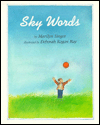Pennypacker, Sara. 2006. Clementine. Illus. by Marla Frazee. NY: Hyperion Books for Children. ISBN: 0786838825.
BOOK REVIEW
In this delightful beginning chapter book Pennypacker has captured the essence of a “not-so-common” independent and creative third-grader named Clementine through a humorous and fresh first-person narrative and a catch phrase of “okay, fine.” After helping cut off the perfectly straight hair of her fourth-grade friend Margaret with a pair of plastic art room scissors, young Clementine is having a bad week, okay, fine, a horrible week. With numerous meetings with the school principal, having her teachers tell her to “pay attention” to them instead of other important things like seeing the janitor and the lunch lady in a “disgusting” embrace in the parking lot, and having no luck in making Margaret (and her mother) feel better about her lack of hair with such attempts like coloring what is left with a Flaming Sunset red permanent marker and even cutting off her own hair, Clementine is sure that her parents are going to get rid of her. However, despite her tendency of getting into trouble, her observant and innovative nature leads to thoughts “sproinging” into her head and she becomes a problem solver and accepts the uniqueness of her family and her friendship with Margaret. Frazee’s pen and ink illustrations express the very spirit of the story and its main character. Perfect for reading aloud or alone, this entertaining book is a welcomed addition to any young reader’s collection.
CONNECTIONS
*Continue to read and be entertained by Clementine with Pennypacker and Frazee’s two books The Talented Clementine and Clementine’s Letter (available April 1, 2008).
*For more books with an energetic young heroine read the Judy Moody series by Megan Mcdonald and illus. by Peter H. Reynolds and the Ivy and Bean series by Annie Barrows and illus. by Sophia Blackall.






